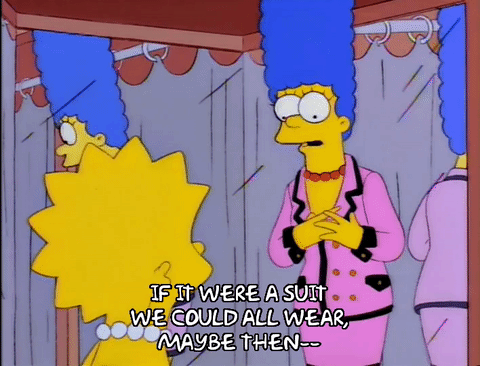Trends Today, Gone Tomorrow: How Gen Z Is Investing In Their Wardrobes
TrendSpotter.com
Originally written for Kulture Hub by Cassell Ferere
What is a trend other than what everyone else is doing?
For those into fashion, it’s what’s being worn by the majority of those who know about fashion. It’s also what is being bought in stores and online at rapid rates.
Inc.com
As the Generation Z and Millennial consumers become better-educated shoppers, learning through social media and the information they can easily obtain from the internet, they consume with intent to be thoughtful and conscientious.
“Nearly half (47%) of Gen Z-ers use their phones while in-store to price check and contact family and friends for advice.”
- National Retail Federation and IBM’s Institute for Business Value. (MNI Targeted Media summary)
Media has been key to Gen Z as 90% of them are informed about the world they live in through those social channels – on our smartphones. Smartphones have broadened the outlook on fashion. Social Media has changed the way it is marketed to the public, ultimately tailoring the content for any one consumer in particular. This is what influencers can be accredited for, and for that have offered inquisition of the state of fashion as an elitist industry.
Photo & Art: Cassell Ferere
The Price Is Right, Right?!
The price points of Gen Z’s and Millennial’s favorite category of fashion, streetwear, are at all-time highs with some of the more popular, longer-lived brands. Brands that were conceived well before the thought of classes crossing paths.
The Simpson explored this idea of class in an episode focused on a Chanel dress. A dress constantly altered by Mrs. Marge Simpson into anything from a cocktail dress to activewear, as she was desperately seeking acceptance of a higher class of women. It’s wise to encourage Marge’s creativity, but not her aspirations.
giphy.com
As informed shoppers, 72% of Gen Z consume with cost in mind when purchasing. From $25-$40 for Stussy or Lamar & Dauley tees to $100 Bape or Billionaire Boys Club tees following that era. Our most desired brands are reaching $100 - $300+ t-shirts from brands like Off-White or Vetements. The rise in price convolutes this notion of streetwear.
morbidfiber.com
None the less, Gen Z are still concerned with price as about 89% of them refer to themselves as price-conscious shoppers, all according to MNI Targeted Media’s research report, making up almost half of all consumers at 40%.
Staring In The (Rearview) Mirror
As shoppers are putting their money toward socially driven, conscious fashion labels, fast-fashion has the vintage, thrift and resale markets have been encroaching on its coattails. Consumers are opening up to a new idea of fashion that is essential to recycled, upcycled and circular processes.
Making it a trend, 50% of Gen Z shoppers are attracted to socially conscious brands when deciding on a purchase.
Ministry of Tomorrow
Trends like this are ideal in the argument of climate change. The very thing Gen Z is most attentive to will be at the forefront of fashion for generations to come. This mentality is stitched into the DNA of those who are at peak learning periods in their lives. Gen Z seeks solutions to climate change and resolving the problems facing the #2 carbon-emitting industry, fashion.
TrendSpotter.com
As fashion start-ups enter the fashion industry they usually fall have fewer resources to manifest ideas. What streetwear has provided is the common ground between the designer’s immediate resources and their aspirations for fashion grandeur. The process, albeit autonomous, is creating fashion from availed material; Greg Lauren repurposes men’s and women’s clothing to create his line, or a brand like Alyx Studios, using 100% upcycled fabric to make their graphic tees.
Digital Shift
The RealReal, Poshmark, Depop, thredUp, and Grailed, are some of the online fashion outlets that are receiving the benefits of these consumer trends. CNBC has stated that by 2028 the used-fashion market will surpass the fast-fashion industry by $20 billion; $64 million to $44 million.
You can expect closets to be stacked with enough recycled, upcycled and circulated garments by then. In the same report, CNBC concluded, 13% of clothes in your girlfriend’s closet will likely be second-hand.
giphy.gif
GlobalData analyzes with data from online startup thredUP, reports that the United States second-hand apparel market is estimated at $24 billion compared to the fast-fashion market which was valued at $35 billion. Trends happen overnight in theory, but in reality, can be seen just over the horizon.
Climate Change vs Cancel Culture
With climate change being more evident in different areas of the world, the only thing fashion can do is be less impactful to the environment. It’s becoming more evident that Gen Z and Millennials are responding to these changes with their attention and buying power.
grist.com
A brand disconnected from the street culture of fashion, removed from the issues and ignorant to the sensitivities of “cancel-culture” isn’t going to be viable in the years to come. It’s best to make an effort as a fashion brand and follow the trend.
Comment and let us know what’s on your PAGE.
Featured
















OpéraSPORT’s Spring Summer 2026 collection blends Seoul’s cultural contrasts with sustainable design, featuring recycled materials, reimagined hanbok silhouettes, and a groundbreaking 3D-printed flip-flop collaboration with Havaianas.